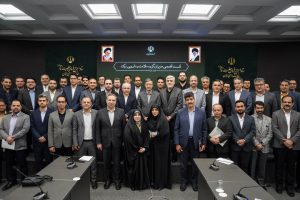
Socioeconomic Factors & Modern Lifestyle on Physical-Mental Health
Barekat Health & Pharmaceutical Group: In recent years, Iran has witnessed extensive changes in lifestyle, social structures, and economic conditions, which have had profound impacts on the physical and mental health of its population.
Economic status, employment conditions, educational attainment, living standards, and access to healthcare resources all play significant roles in individual health. Moreover, the modern lifestyle—characterized by changes in dietary habits, lack of physical activity, and greater use of digital technologies—has adversely affected the prevalence of metabolic diseases, mental health issues, and overall physical well-being.
Financial & Economic Status on Physical and Mental Health
Economic and financial circumstances are among the most significant factors affecting individual health both directly and indirectly. In Iran, individuals with lower incomes often have reduced access to quality healthcare and may lack the financial means to meet nutritional needs adequately. Studies show that low financial status correlates with increased risk of chronic diseases like diabetes, hypertension, and cardiovascular diseases. Additionally, financial strain and the inability to manage living costs can heighten anxiety and depression, especially among the youth and working classes who face numerous economic challenges. Research by Tehran University of Medical Sciences indicates that these groups experience the highest levels of anxiety and depression.
Education & Health Awareness
Educational attainment and health awareness are other crucial determinants of health. Individuals with higher education levels are generally more knowledgeable about the importance of healthy eating, exercise, and maintaining a balanced lifestyle, which reduces their risk of chronic diseases. Recent statistics from the Statistical Center of Iran indicate that individuals with higher education are less susceptible to obesity, hypertension, and diabetes. This factor also influences mental health, as better-informed individuals are equipped with superior stress-management skills and coping mechanisms.
Role of Living Environment on Health
Living environment and surroundings are other influential factors. Residing in densely populated urban areas with high levels of noise and environmental pollution can negatively impact both physical and mental health.
Increased stress levels and respiratory issues are common problems in urban regions. Conversely, individuals in rural and less populated areas may face challenges related to limited access to healthcare and medical services, which can increase chronic health issues. Studies conducted in major Iranian cities like Tehran and Mashhad reveal that living in polluted, noisy environments elevates the risk of depression and anxiety.
Modern Lifestyle & Health Challenges
In addition to socioeconomic factors, lifestyle changes and behavioral habits also significantly impact physical and mental health. Poor diet and physical inactivity are two key components of the modern lifestyle. With greater access to high-calorie fast foods and reduced physical activity, rates of obesity, diabetes, and hypertension are rising in Iran.
According to data from the Ministry of Health, obesity rates among Iranian adolescents and young adults have increased over the past decade, largely due to lifestyle changes and greater preference for processed foods.
Excessive use of digital technology and social media has also had widespread effects on mental health, especially among the youth. Addiction to social networks and continuous use of smartphones can reduce sleep quality, increase social isolation, and heighten anxiety and depression, particularly in large, high-stress urban centers.
Socioeconomic Factors & Modern Lifestyle on Health
The combined impact of socioeconomic factors and modern lifestyle is even more pronounced. For instance, a low-income individual living in a crowded urban area, who follows an unhealthy diet due to financial pressures, may face higher risks of metabolic diseases and mental health issues. Job-related stress and lack of time for rest and recreation can also exacerbate anxiety and depression.
Additionally, women and the elderly are especially affected by economic and social changes due to their specific needs. Studies show that anxiety and depression rates are higher among women and the elderly due to social pressures and a lack of financial and emotional support.
Family Structure & Social Relationships in Health
One often overlooked aspect is the effect of family structure and social relationships on physical and mental health. The family, as the primary institution where individuals develop, plays a critical role in shaping behavioral patterns, values, and beliefs. In Iranian culture, family traditionally serves as a source of emotional and psychological support. However, changes in social structures, including the rise of nuclear families and diminished intergenerational interactions—especially in urban areas—have reduced this support in many cases.
Family tensions, such as financial pressures, marital conflicts, and parenting-related stress, directly impact mental health. Children in families facing these challenges are more prone to mental health issues such as anxiety, depression, and low self-esteem. A lack of emotional support within families can also lead to loneliness and social isolation, which are known risk factors for mental health disorders. Studies indicate that individuals with strong social relationships and emotional support from family and friends are less likely to experience physical and mental health issues and can cope better with daily stress. In a society undergoing social and cultural shifts, strengthening family and social support networks can be an effective approach to improving physical and mental health.
Environmental Changes on Physical & Mental Health
Another critical factor affecting health is environmental changes, which have increasingly threatened physical and mental health in Iran. Air pollution, temperature fluctuations, water shortages, and drought are factors directly impacting physical health.
Air pollution is a major environmental issue in Iran, especially in metropolitan areas like Tehran, Isfahan, and Mashhad. Continuous exposure to air pollutants increases the incidence of respiratory, cardiovascular, and even cancer-related diseases. Furthermore, climate changes and environmental pollution can elevate stress and anxiety levels among the population, as these issues create uncertainty about the future. These anxieties may manifest as daily worries about personal and family health or concerns about the loss of natural resources and living environments.
Additionally, water scarcity and drought in many regions pose direct threats to agriculture and food security, directly affecting physical and mental health. Migration from rural to urban areas due to drought creates economic and social challenges, leading to psychological pressures and increased anxiety and depression among these migrant populations.
Mental Health Challenges in the Digital Age
While technological advancements and digitalization have offered numerous benefits, they have also introduced new challenges to physical and mental health, especially for young people and adolescents. Increased use of social media, online gaming, and dependence on digital technology can lead to issues like sleep disturbances, reduced face-to-face interactions, and increased social anxiety. Internet and social media addiction has been recognized as a new mental health disorder, which can seriously affect mental well-being.
Young people and adolescents who spend extensive time online may face issues like negative self-image, reduced self-confidence, and increased social comparisons. Many studies have shown that excessive social media use is associated with heightened risks of depression and anxiety, particularly among teenagers. Moreover, when online content influences individual behavior negatively, individuals may engage in unhealthy behaviors such as substance use or risky activities.
Solutions
Findings suggest that socioeconomic factors and modern lifestyle significantly impact the physical and mental health of Iranian society. Rapid lifestyle changes and increased digital technology use, combined with economic and social pressures, raise the risk of metabolic diseases and mental health issues. To improve public health, policies and programs are needed to mitigate these harmful effects. Some key measures include:
-Public Education and Health Awareness: Educational programs at schools and universities can help individuals adopt healthier lifestyles and understand the importance of proper nutrition and exercise.
– Supportive Economic Policies: Developing support programs for low-income individuals and assisting vulnerable groups can alleviate economic pressures and improve mental health.
– Expanding Natural Spaces in Urban Areas: Expanding green and natural spaces can help mitigate the adverse effects of pollution and urban stress, improving physical and mental health.
Ultimately, enhancing public health requires the integration of social, economic, and cultural policies, utilizing educational programs, and providing more opportunities for access to healthcare and welfare services to promote public health.
New Technologies in Health Improvement
Alongside the challenges posed by technology, leveraging new technologies to promote physical and mental health is also of high importance. Utilizing new technologies, such as health applications and monitoring systems, can help individuals manage their health better. Moreover, online mental health programs and telemedicine, especially in rural and underserved areas, provide access to mental health services and counseling, playing an effective role in alleviating psychological issues.
Virtual reality (VR) and augmented reality (AR) have also emerged as new therapeutic tools in mental health. For example, VR can help individuals with anxiety disorders safely confront fear-inducing stimuli, gradually reducing their anxiety. Additionally, mindfulness and meditation apps enable users to practice daily routines that reduce stress and enhance mental well-being.
Conclusion
Research indicates that socioeconomic factors and the modern lifestyle have significantly impacted the physical and mental health of the Iranian population. Economic instability, limited access to adequate healthcare, lifestyle and environmental changes, and increased dependency on digital technologies are among the factors contributing to increased physical and mental health challenges. Enhancing social and family support networks, providing health education, expanding access to mental health services, particularly in underserved areas, and addressing the negative effects of climate change are practical strategies for improving the health of Iranian society.
-
Voice of Life in World of News — Redefining Health Journalism in the Information Age

-
Senior Health Officials & Barkat GD Visit Sobhan Oncology

-
Barkat Group specialized meeting

-
Safa Appointed as Barekat General Director

-
Barekat Health & Pharmaceutical Group at the 10th Iran Pharma Exhibition

-
Ali Safa visits Sobhan Oncology & Sobhan Darou

-
Pirsalehi & Safa visit Saman Daroo 8 Knowledge-based Company

-
Barekat Managing Director Visits Samen Pharmaceutical Company

